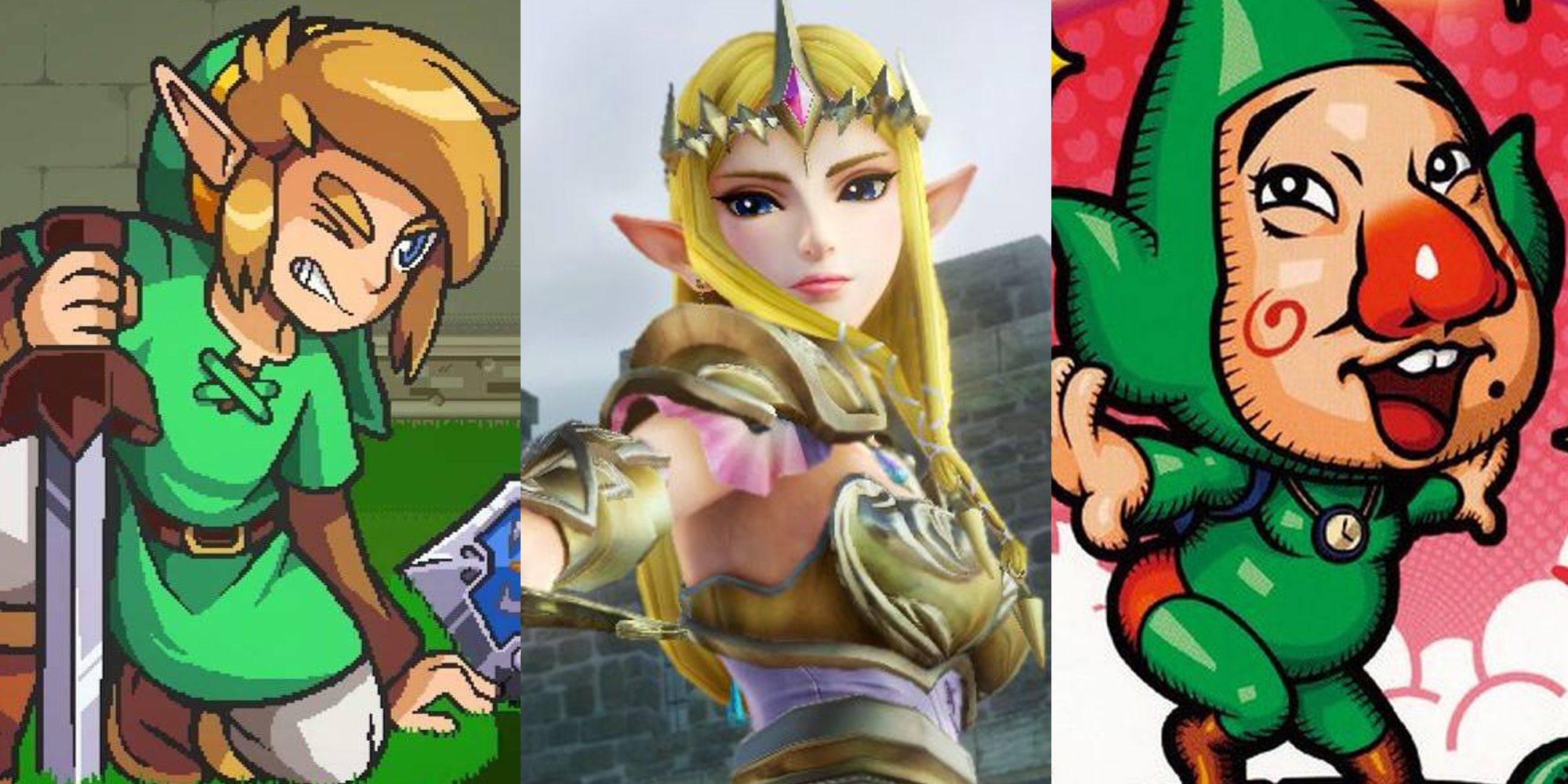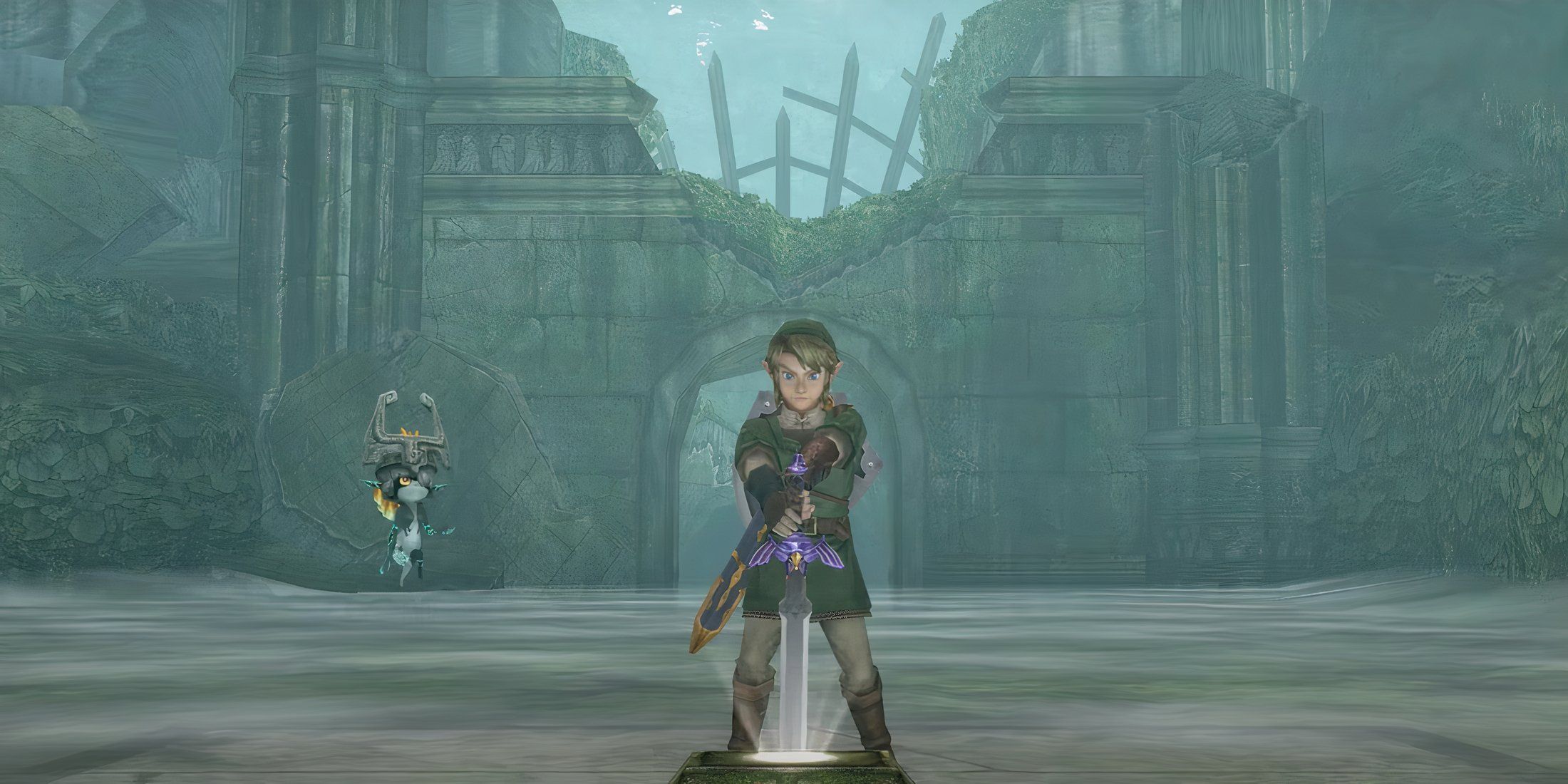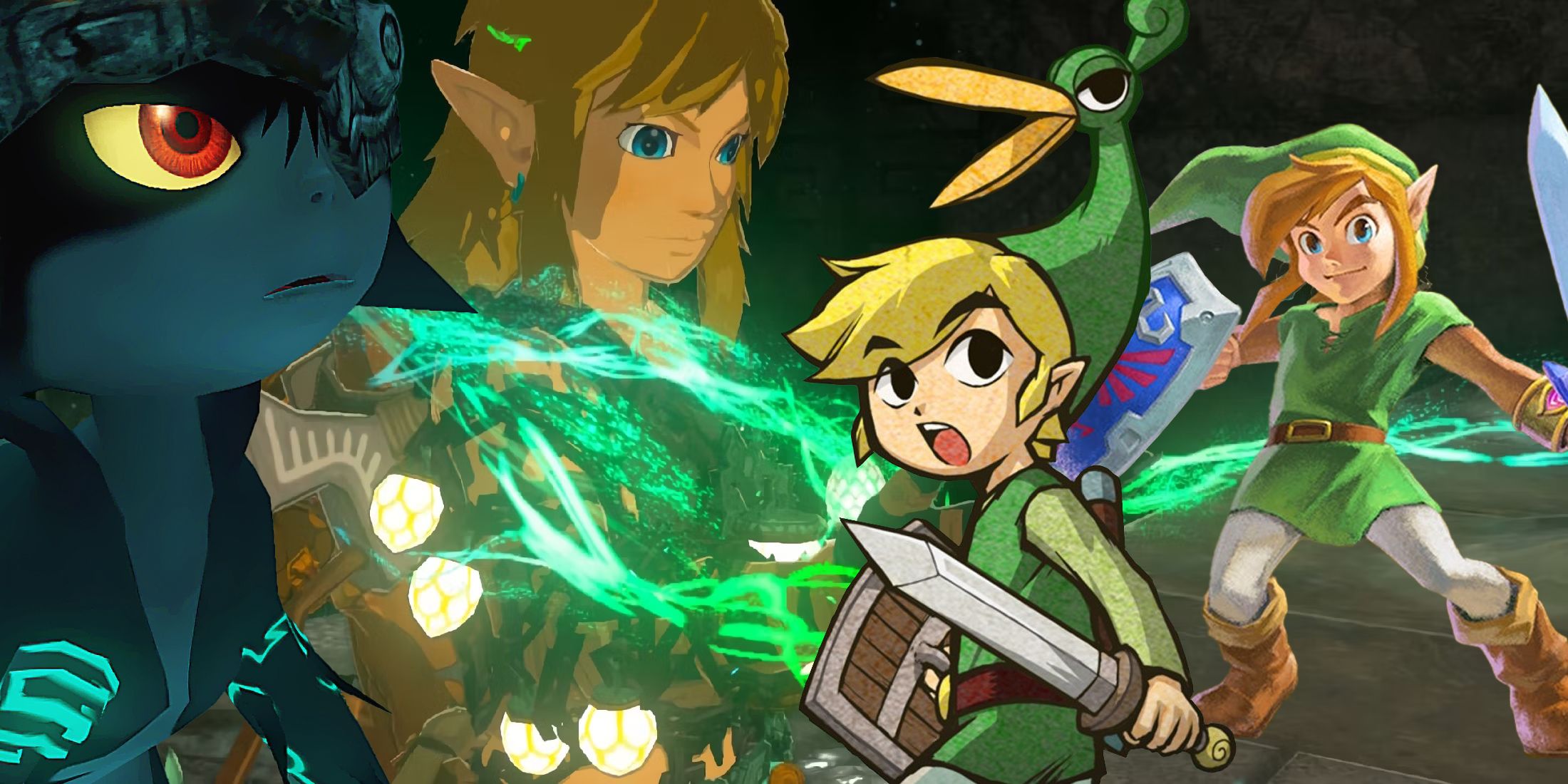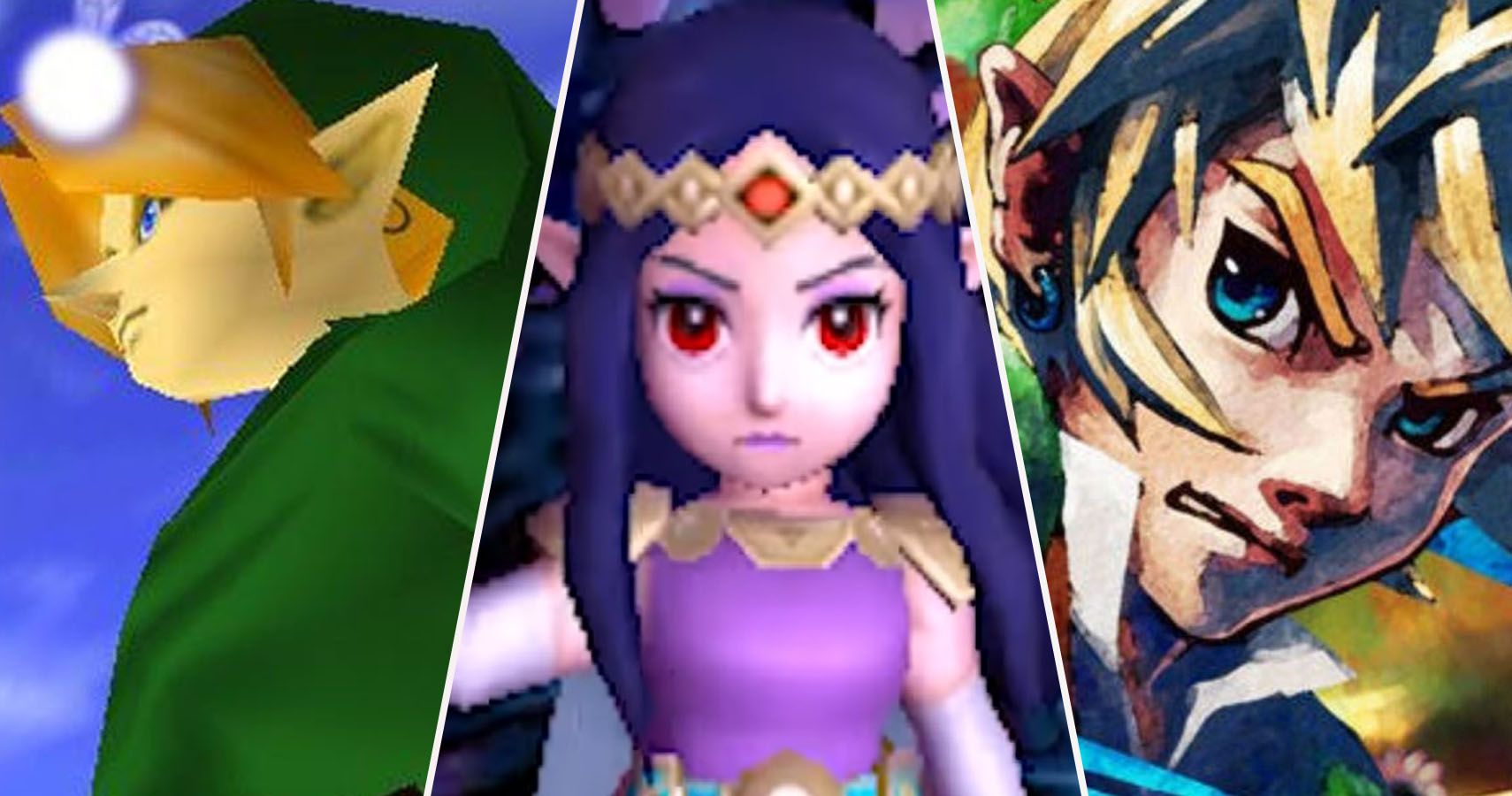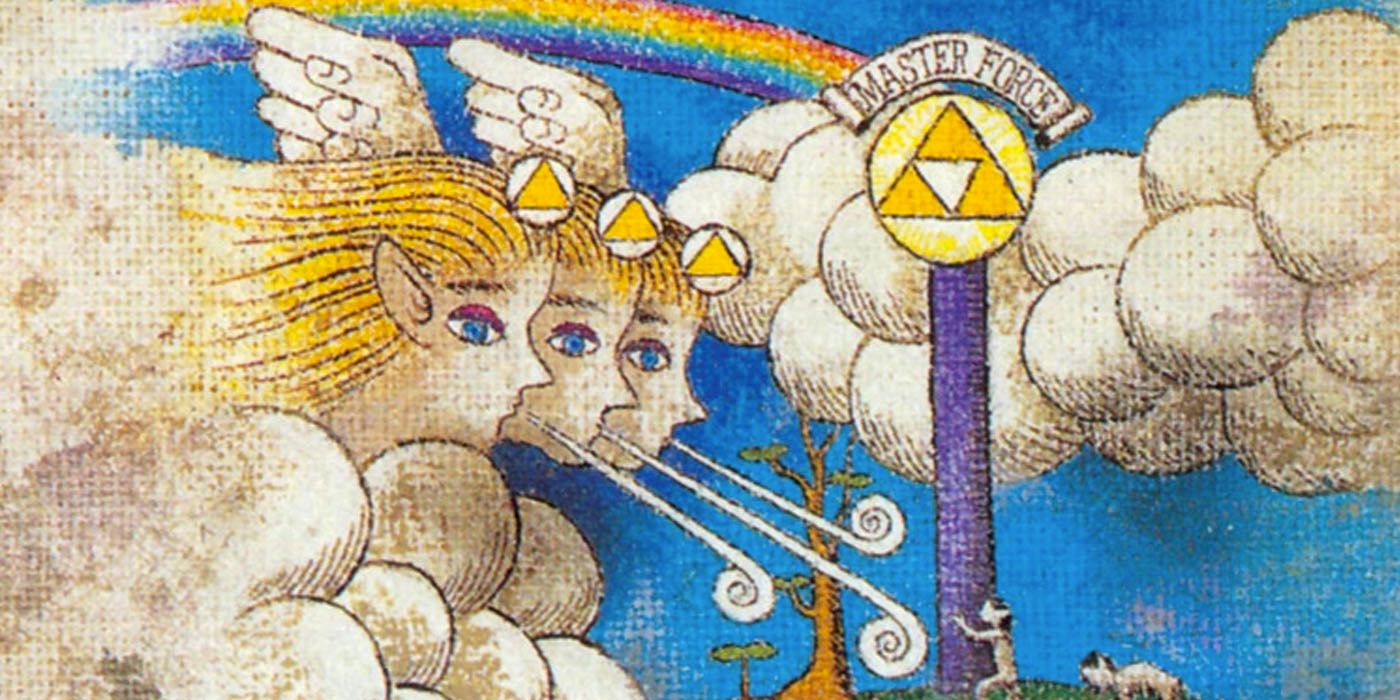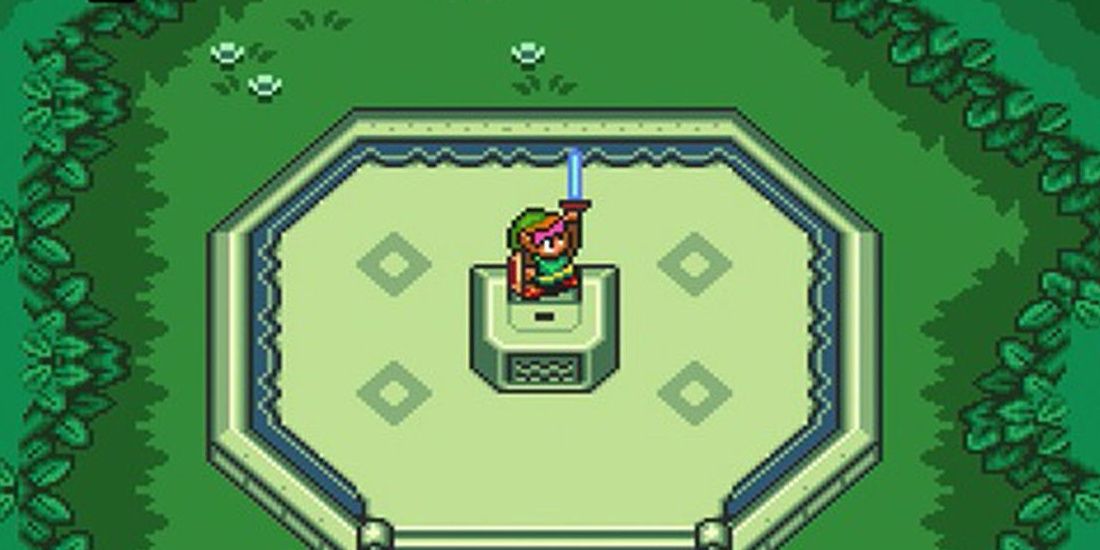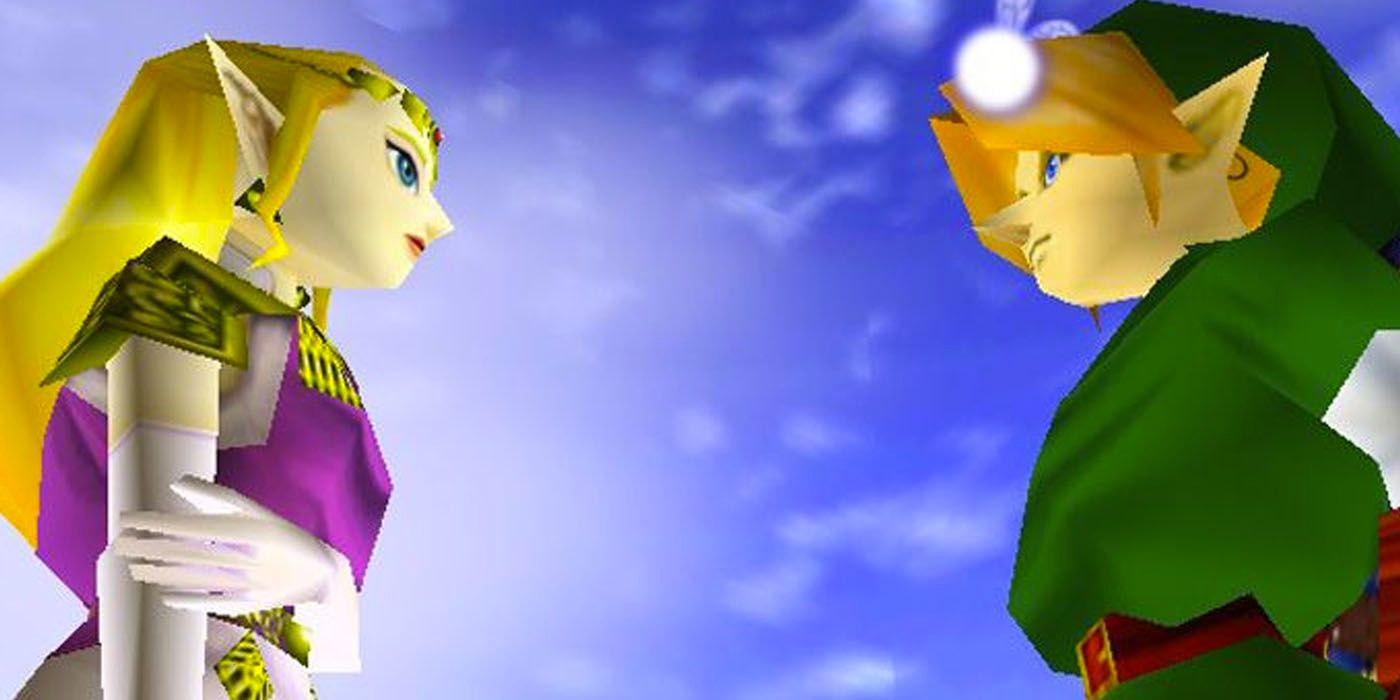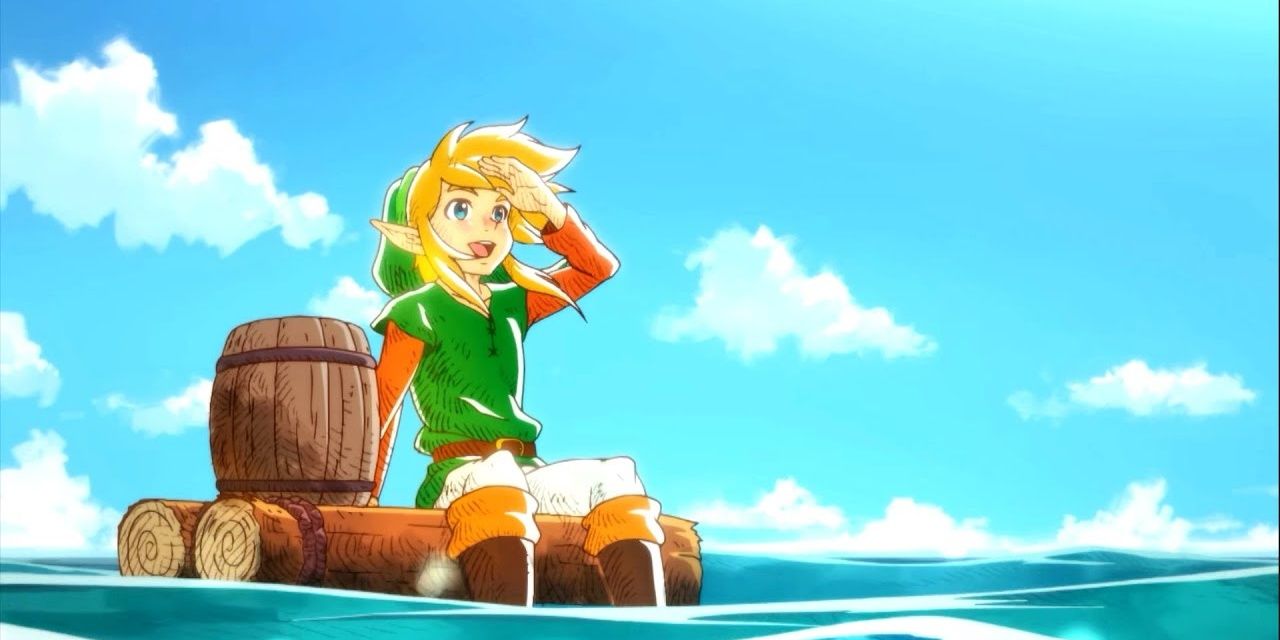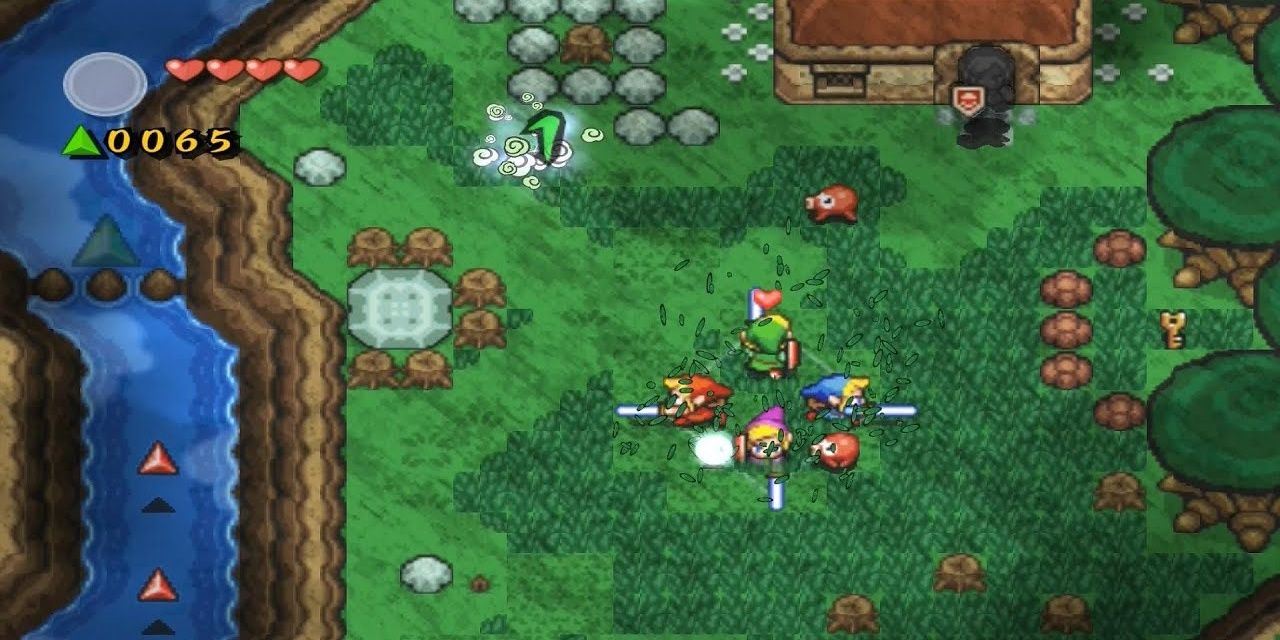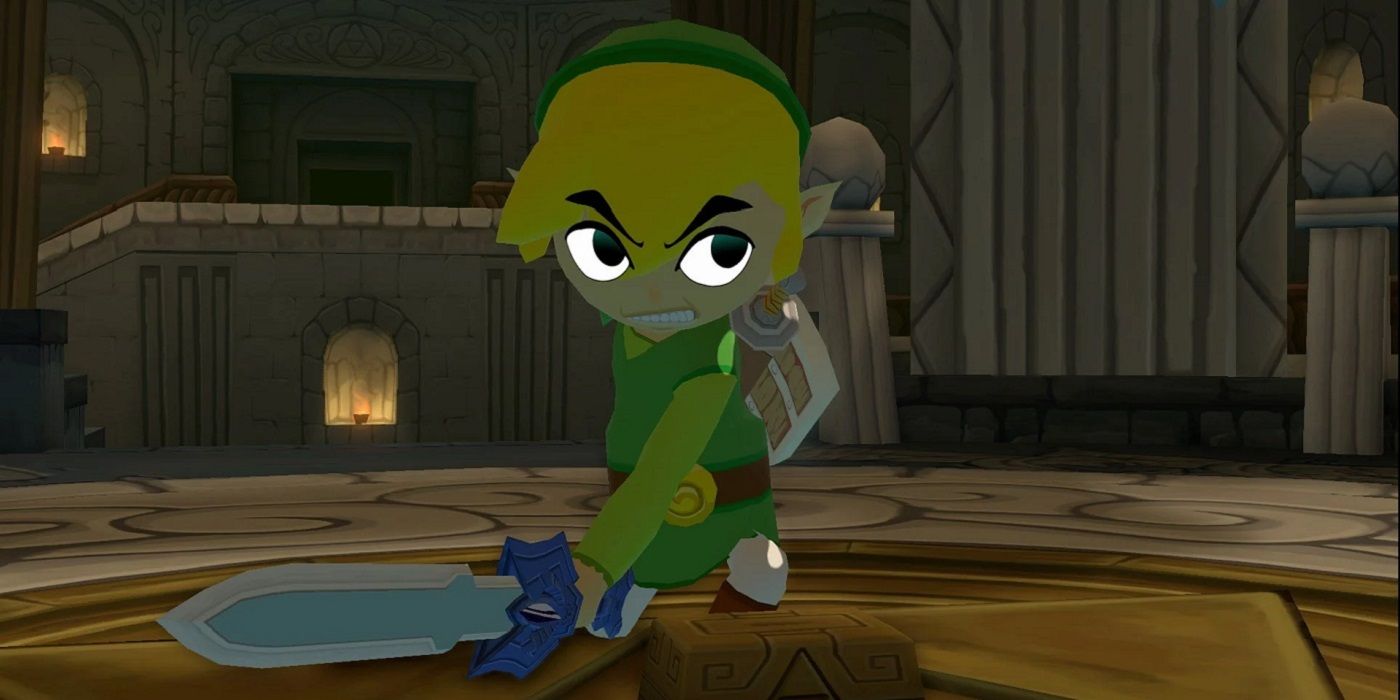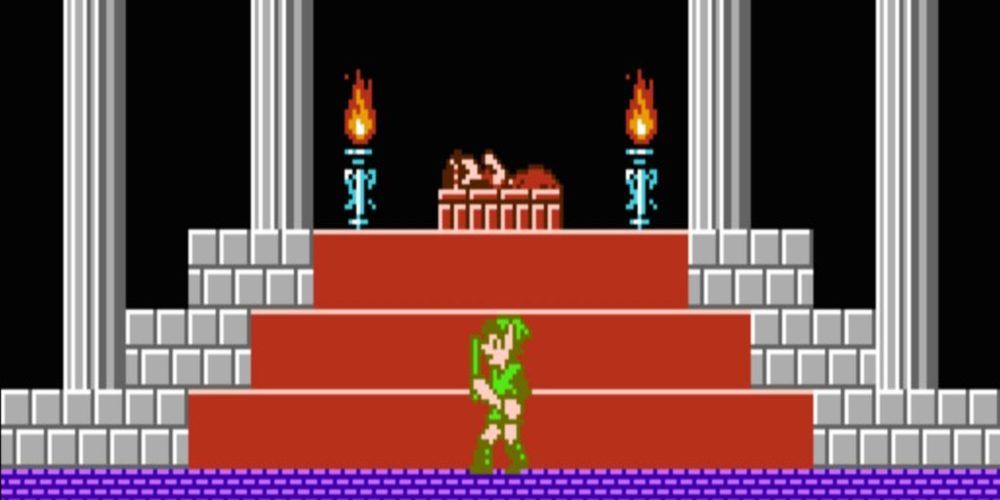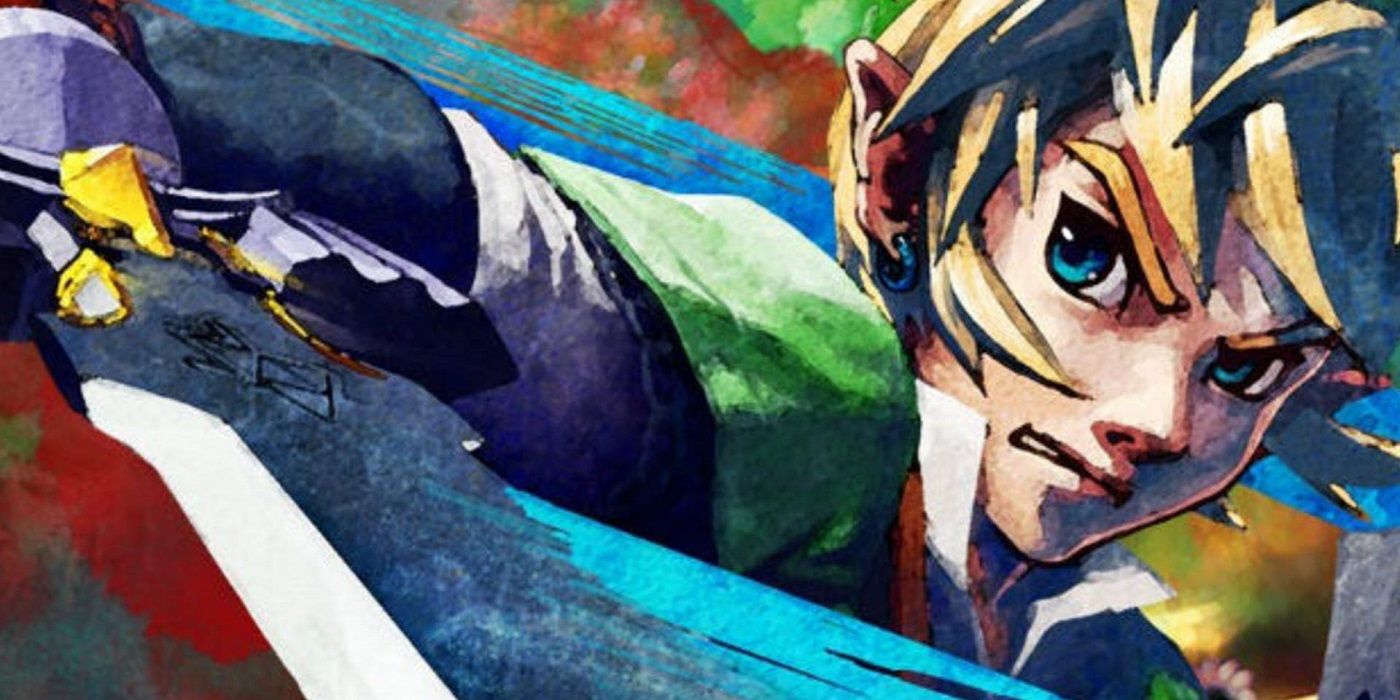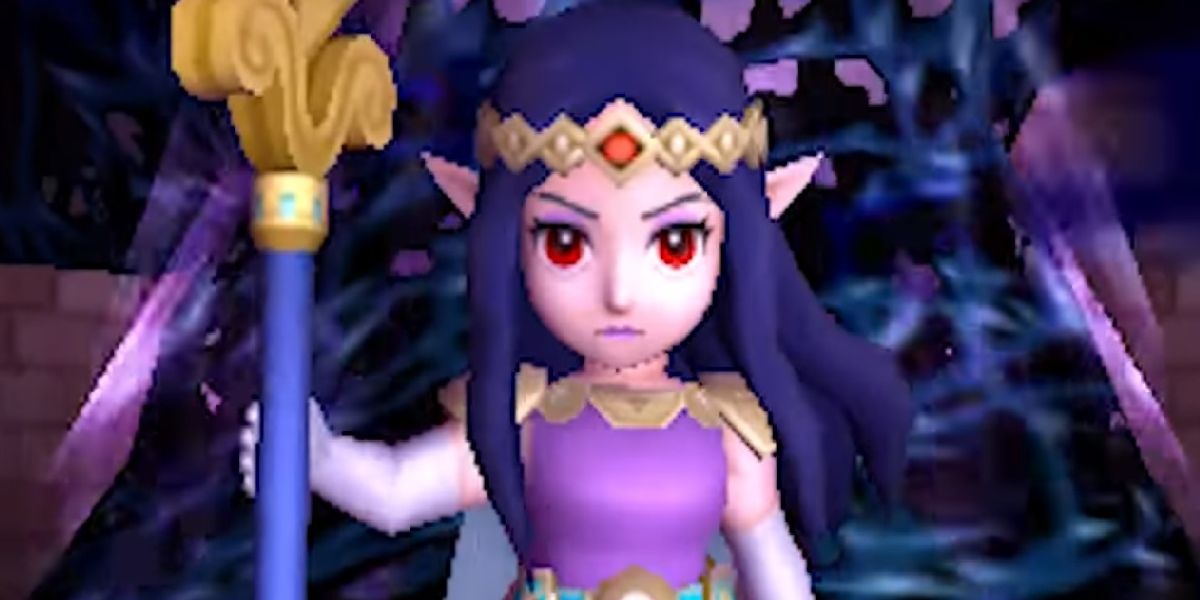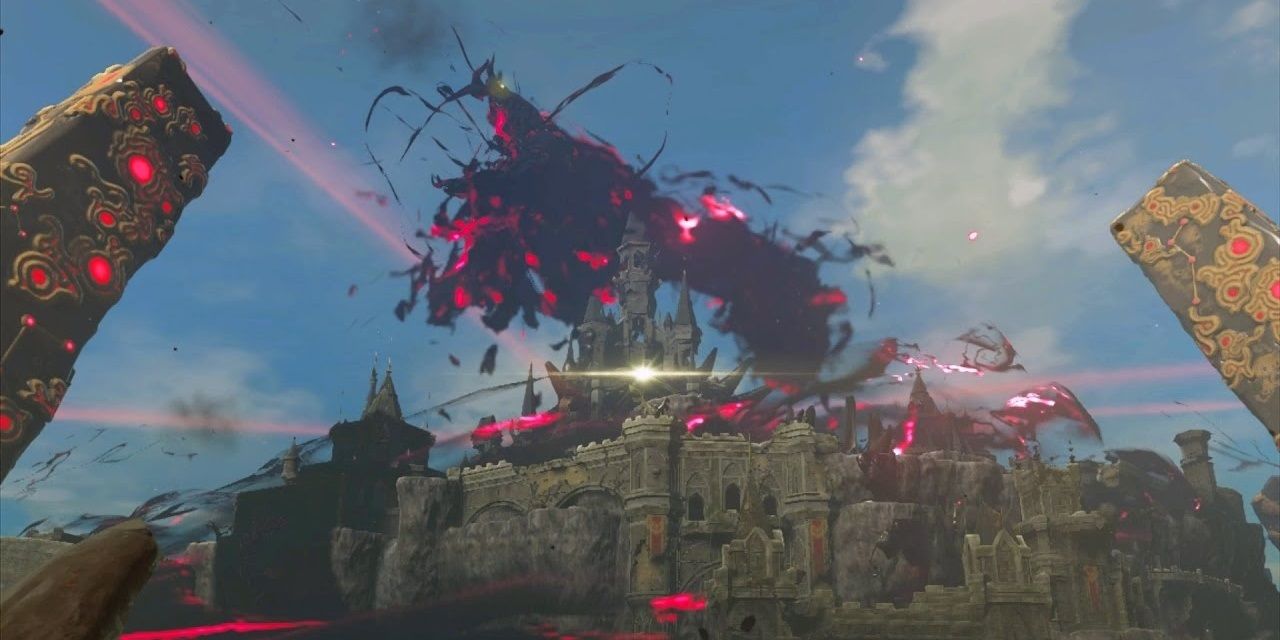There’s one very important truth about the Zelda timeline: it has always existed. Contrary to the common pushback the timeline received as Nintendo caving to audience demands, the fact of the matter is that The Legend of Zelda has always been very conscious about its lore, its story, and the themes the franchise was pushing. A Link to the Past’s manual is a dive into Hylian mythology that’s still relevant to the franchise’s storytelling today.
It’s also necessary to recognize that The Legend of Zelda has a timeline in the most basic of senses, as Zelda II: The Adventure of Link was developed as a direct narrative sequel to the original Legend of Zelda, with A Link to the Past an explicit prequel. The Legend of Zelda’s timeline is very much real and it’s evolved considerably since the Hyrule Fantasy originated back in 1986.
10 The Triforce Of The Gods
Although the Triforce has always been an important part of The Legend of Zelda’s iconography, the first two NES games make use of Christian imagery alongside the Triforce. Hyrule as originally depicted was a traditional fantasy setting with a Judeo-Christian slant. It’s to be expected of the era, but it also made the transition into A Link to the Past more notable.
Titled Triforce of the Gods in Japan, A Link to the Past completely redefined The Legend of Zelda’s lore. Not only were all visual references to Christianity completely removed, Hyrule was established as a polytheistic setting with multiple Gods (who would later be clarified as Goddesses.)
9 A Link To The Past
More notable than A Link to the Past recontextualizing the series’ lore was the game taking a step backwards in The Legend of Zelda’s chronology. The original Zelda and The Adventure of Link both star the same Link, the sequel set roughly three years after the first. A Link to the Past takes place centuries early, this Link an ancestor of the eventual Hero of Hyrule. As a prequel, A Link to the Past set an important precedent for the series’ timeline.
8 The Imprisoning Split
One of the main events detailed in A Link to the Past’s backstory is the Imprisoning War, which Ocarina of Time was originally intended to focus on. In practice, however, Ocarina of Time serves more as a prologue to the Imprisoning War– establishing key players and moving pieces on the board.
The full details of the Imprisoning War are still unclear, but Ocarina of Time change in direction brought major consequences. Instead of focusing on the Imprisoning War, Ocarina of Time tells an intimate story about the passage of time that ends with Link cast out from the future, alone in a past that isn’t truly his. More impactfully, it’s this event that resulted in The Legend of Zelda’s timeline splitting.
7 The Legendary Hero’s Adventures
The average Link only ever stars in a maximum of two games, with quite a few relegated to a single game. This isn’t the case for the Legendary Hero, the main character of A Link to the Past, Link’s Awakening, and the Oracle duology. Miyamoto famously said Link’s Awakening was an adventure any Link who’s defeated Ganon could experience, but it explicitly references A Link to the Past’s imagery.
Similarly, both Oracle games reference Link’s Awakening in subtle ways. Oracle of Seasons features Marin– a potential influence on how Link interprets Marin– while Oracle of Ages sets up why Link writes on all his equipment come Link’s Awakening. More importantly, the Oracle games end with Link setting sail, mirroring the intro of Link’s Awakening. That said, the Legendary Hero is now an anomaly. It’s unlikely any other Link will get four whole games.
6 The Saga Of The Four Sword
There aren’t many story arcs running through the Zelda timeline other than the mainline games featuring Link, Zelda, & Ganon in tandem, but that just makes the existence of the Four Swords narrative all the more compelling. In a timeline that has so far chronicled a single epic, it’s endearing that three games pivot to tell their own tales.
Four Swords, Four Swords Adventures, and The Minish Cap struggle to fit into the timeline as neatly as the other titles, but they don’t create any jarring continuity errors either. They’re perhaps better designated as spin-off games, but it’s important the Hyrule’s history not solely center on Ganon or the Master Sword. Vaati and the Four Sword are a familiar, but welcome, bit of variety.
5 Hyrule Washed Away
Nintendo didn’t pull the split timeline out of thin air and Ocarina of Time’s ending credits showcase very clearly how the timeline works. There’s the timeline Link left behind– where everyone was celebrating in– and there’s the timeline Link was sent to– where the rest of the ending and Majora’s Mask take place.
The Wind Waker decides to put this timeline split to good use by adding some serious consequences to Ocarina of Time’s ending. With Link gone, there’s no one to stop Ganon when he resurrects. The Goddesses have no choice but to flood Hyrule, washing away the kingdom and giving the Adult Timeline a dark tone in spite of its colorful aesthetic.
4 The Fallen Timeline
The reveal that there were actually three timelines– not two– came as something of a shock for fans of the franchise, but it was in many ways to reconcile the existence of the pre-Ocarina of Time games. By not adapting the Imprisoning War, Ocarina of Time left a narrative gap that was meant to lead into A Link to the Past.
Hyrule Historia rationalizes that a previously unmentioned third timeline exists where Link was killed, leading directly into A Link to the Past. There’s nothing in-game to indicate where this split happens or why, but Link’s dream at the start of Ocarina of Time does show him being killed by Ganondorf.
3 Reincarnation Blues
Skyward Sword takes the Zelda franchise back to the very beginning in order to recontextualize the series’ main players. Link and Zelda are now key players in a game of divine chess between Hylia and Demise, destined to reincarnate through time in order to confront the spirit of Malice, often Ganon.
Hylia herself is shaping up to be an incredibly important player in the series’ lore. A matriarch of sorts for the Golden Goddess, Hylia orchestrates the main events of Skyward Sword and her iconography appears quite frequently throughout Breath of the Wild. Hylia will likely have the role the Golden Goddesses used to play.
2 Parallel Universes & You
A Link Between Worlds might be a handheld installment, but it makes some massive revelations about the Zelda universe. Beyond there being alternate worlds (often conveyed through the dual world mechanic,) that are straight up parallel universes. Beneath Hyrule is Lorule, a land that looks like the Dark World but very much isn’t. Not only is Lorule a direct mirror to Hyrule, it once had its own Triforce that was corrupted with time. The lore implications of there being a second Triforce at all is extremely significant.
1 10,000 Years Of History
There’s at least 10,000 years of history unaccounted for leading up to the events of Breath of the Wild. While Nintendo has used this as a shield to avoid clarifying where in the timeline BotW falls, all signs point to the game being set in the Fallen Timeline. Breath of the Wild shares several key similarities with the Fallen Timeline games: a Master Sword in the Lost Woods, a focus on pure gameplay, and a Hyrule that’s already past its prime.
More importantly, it’s said in-game that both Ruto and Nabooru once challenged Ganon, which they would have done in the Fallen Timeline. Of course, the point Breath of the Wild is trying to make is that so much time has passed, it ultimately doesn’t matter when or if any of this happened.

